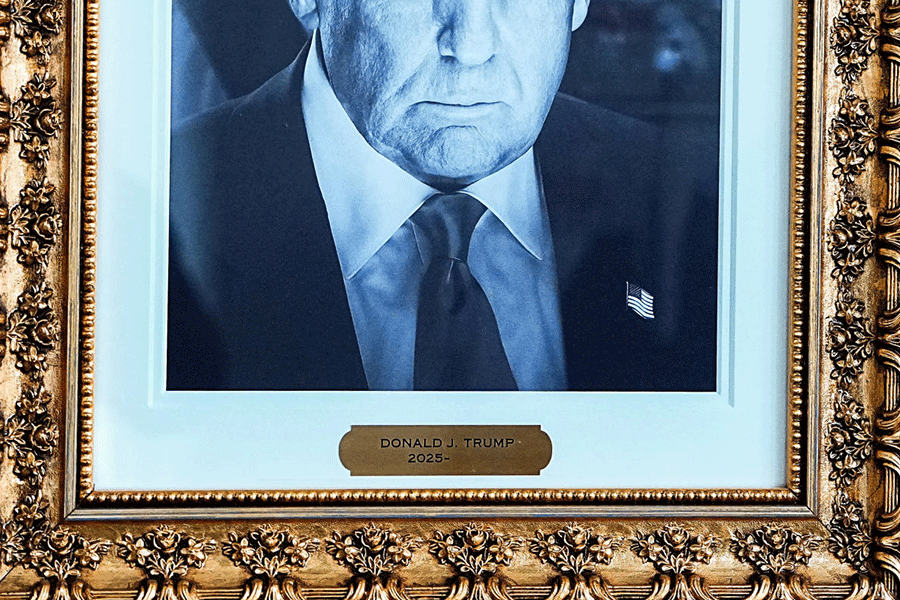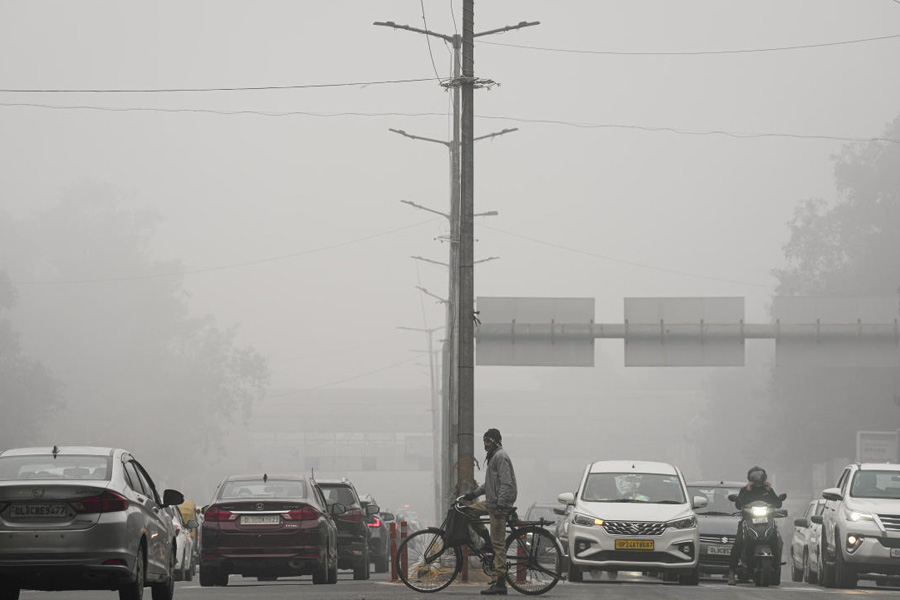Long before postmodernism theorised the death of the image, F.N. Souza had already burnt its corpse. Works from the artist’s late period — on view at the show, F.N. Souza: Drawings and Chemical Alterations, held at Emami Art — reveal how Souza dismantled the very architecture of modern imagery. In this exhibition, drawings and chemical alterations on magazine pages from the 1980s and the 1990s show Souza treading a terrain once claimed by Western pop artists but giving it his own stamp of volatility.
While Andy Warhol mined the magazine surface for icons, Richard Hamilton teased its consumerist fantasies and Barbara Kruger turned its typography into weapons, Souza used nail polish remover, turpentine, and floor cleaners to corrode the printed page until the commercial face of desire melted. Onto that abraded surface, he drew his own figures — grim, erotic and broken.
Souza spent much of his life in exile. His work, however, never sought the comfort of belonging. It wrestled with faith, flesh, and authority, and in these solvent-altered pieces, that struggle feels almost literal. Each magazine page is turned into a battlefield for his restless lines (picture, left). Where pop artists embraced reproduction, Souza practised desecration. His process was not mechanical but incendiary, proof that an act of destruction could still yield form.
The women he conjured from the chemical haze are neither models nor victims but witnesses to the collapse of the image itself. This exhibition makes clear how radical Souza remained till the end. His “painting without paint” was born from poverty and the resultant experimentation but, in retrospect, it feels prophetic. The results of his chemical alteration are both brutal and luminous.
In stark contrast to the visceral works by Souza were the contemplative, aqueous landscapes by Santanu Debnath at the solo show, Morphology of Water, which was on display alongside Souza’s exhibition. The reflection of light on ripples being blown across the surface of a pond, the lushness of the glades that surrounded these waterbodies (picture, right), the jewel tones of the water and the local ecologies that thrive around wetlands could lull viewers into a trance. Yet, Debnath’s intention, too, was to shock. Each time the eye lingered on a piece, viewers were jerked out of their complacency — a rubber slipper here, an empty packet there, a crumpled PET bottle floating amidst the water hyacinth were reminders of human depredations on these natural settings.
The other thing that was striking was the veil of silence that hung over these founts of civilisation. Waterbodies, be they a river or a pond, are usually hives of human activity and chatter. But Debnath’s keen vision captures the desertion of these formerly lively spaces — once central to communal and spiritual life — with the onset of urbanisation.
His technique borrows from pre-modern romanticism only to subvert it. The brushwork is deliberate, the tonal range meditative. Yet there is dissonance: the detritus glints too sharply, the shadows stretch too long. The result is a visual unease that undermines the viewer’s passive admiration.











